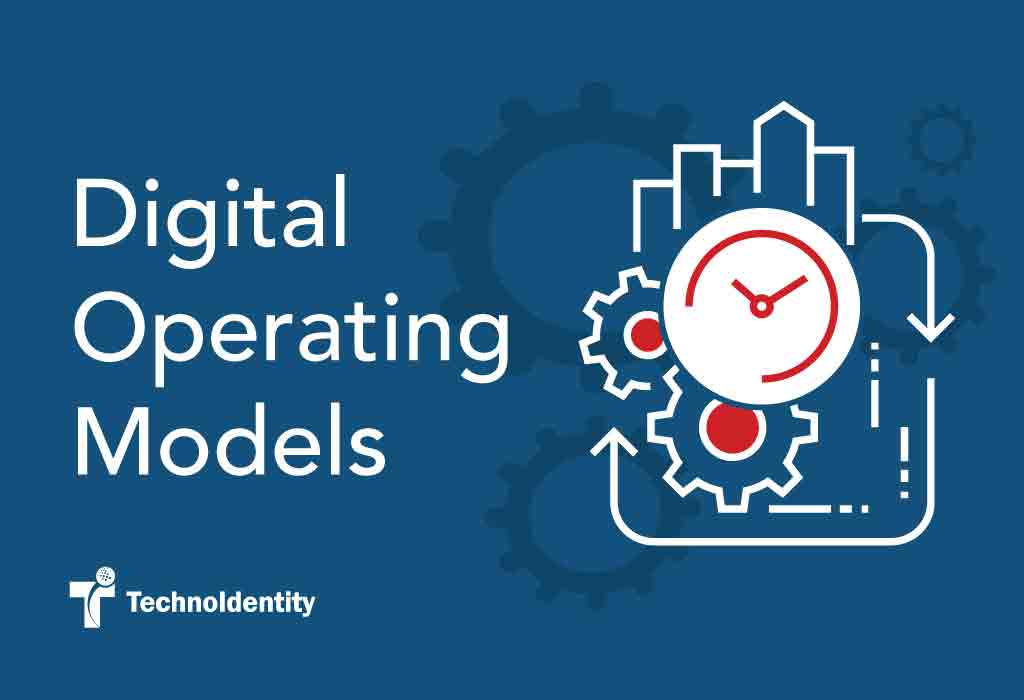
DIGITAL OPERATING MODELS
A lot of business transformation efforts begin with reinventing its operating model. Business leaders have to figure out new ways when the current working model fails to perform. Rapid rise in technology and increasing customer expectations have convinced many companies to revamp existing business models. This transformational shift can be in the form of developing a new product line, replacing legacy ecosystem, or creating a new revenue source.
For this level of change in business, a little (and sometimes massive) shift in technology is not just enough. The enterprises need to think beyond technology and talent; changing or updating internal design might work. Businesses will require executing new business strategies focused on delivering customer experience. Legacy operating models need to be reinvented and upgraded to newer ones so that the enterprises can adapt, thrive, and revive in the updated digital ecosystem.
Business Strategy
Customer value is often considered as a core objective by businesses- big and small. Particularly in the digital-driven operating model, it’s the primary focus that rules every process from tech to governance to portfolio management. Business leaders can develop and set the rules by implementing fundamental priorities on the outcomes that businesses are looking forward to delivering to their customers. However, it is way more imperative that these fundamental priorities must be concrete, transparent, and communicated effectively.
An operating model constitutes of the people, processes, organization, decisions, and incentives; therefore, it’s logical that it is linked with the business strategy. The enterprise needs to begin with a very transparent, clearly defined digital ambition that defines where to perform and how to win the game. Business components such as the ambition, products, service, customers, people, process, decision, capabilities, incentives, organization, data, and technology are the digital enablers that play a critical role in building a successful business strategy.
Portfolio Management
In customer value-centric operating model, the enterprise’ decision over what product or services it should invest in is broadly based on what enterprise wants and how it helps it’s customers to achieve it. Possible routes to this outcome can be pursued by creating a sequence of portfolio bets. Each of these portfolio bets can be assigned to different teams for achieving success. As companies are moving to digital space, they often face several challenges that arise out of desires, strategies, and actual execution.
It involves a greater intensity of risk tolerance and team reliance, along with the vision to avoid the traditional guidelines. Exploring a wider volume of potentially revolutionary opportunities for product innovation is the actual requirement though. For effective portfolio management, the business must focus on critical investment decisions. Forming a digital enterprise not only involves building an advance operating model but takes a considerable volume of time and money. The enterprise may require to replace the legacy models with customer-facing technology and seamless processes. Companies might need to revamp its business and corporate strategy to ensure high-impact products, services.
Product Architecture & Agile Delivery
Today’s digital enterprises are developed on new product roadmaps that base customer’s pain points and requirements. While designing an operating model, a business must ensure that customer learning is consistently taken care of right from the initial development phase. Enterprises, nowadays, are using agile development and delivery practices to ensure an efficient, reliable supply of products.
By using a well-defined product architecture and delivery approach across various business units, enterprises are able to build features efficiently, test them, and refine them in quick iterations. Customer learning must be encapsulated successfully into all future iterations of the product. For business organizations, it necessitates a massive change in technology or sometimes discomforts in the event when customer views are transparent. As a result, the enterprise will perform in a better and more organized way.
New Models of Leadership
With changing times, almost each and everything goes obsolete, so does the operational teams and operating models. New and updated models need to be backed with new ideas that new workforce supports. However, from decades, the corporate environment is a fairly uniform structure where the executives are allegedly perceived as quintessential professionals. Today’s digital enterprises are looking for individuals with passion and skills to do things differently.
With growing business demands and consumer perspective, the decision-making capabilities must be shifted to customer-oriented teams and the work culture must be changed to reflect the organization’s focus on customer-centric outcomes moderately than the traditional performance metrics. Enterprises need a mix of authoritative leaders who focus on creating and achieving goals, coach leader who comes with a future-ready approach, authentic executives who are honest, knows their responsibilities, and the forerunner executives who lead the team with high performance skills.
Ensuring Operating Models Evolve
Digital is taking over different industry verticals and it is influencing the business workflow significantly. A reinvented operating model is one that possesses the capability to enhance business resilience while digitizing the entire ecosystem. Businesses need to adopt a proactive approach to opportunistically reevaluate the operating model. Though leadership can be a strategic agenda that leads to improved performance.
To make your operating model re-evaluation strategy successful, you need to ensure that no unplanned gaps exist. Placing the customer value at the heart of the operating model will help to make it a success. Moreover, re-segmenting and re-inventing operating model around digital channels and customer journeys will certainly ensure effective delivery of customer value.


